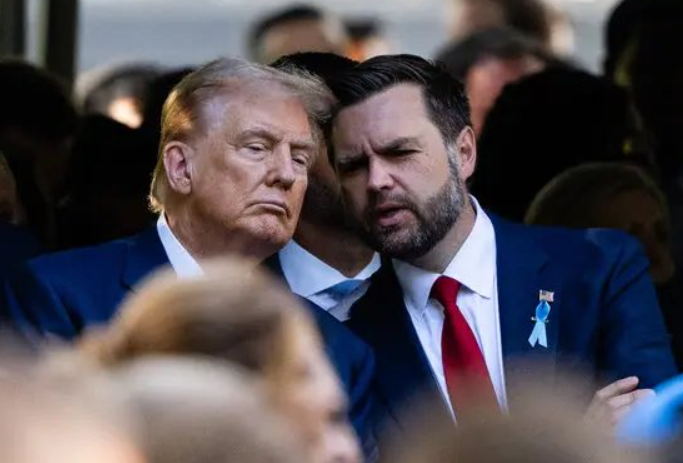This blog explores the real reason behind U.S. President Donald Trump’s sudden call for a ceasefire between Iran and Israel, even after Iran bombed American bases. It dives deep into how the fear of skyrocketing crude oil prices, inflation, and the threat of a U.S. recession pressured Trump into de-escalating tensions. Based on insights from JP Morgan’s report and live market reactions, the article explains how global markets, oil prices, and investor sentiment are closely tied to geopolitical developments — especially in the Middle East. A must-read for anyone tracking global markets, oil, and U.S. economic policy amid rising global uncertainty.
Why Trump Proposed a Ceasefire Despite Bombing Iran?
Over the last 2 days, we’ve witnessed a dramatic shift in global geopolitics, particularly involving U.S. President Donald Trump and his surprising move to support a ceasefire between Iran and Israel, even after Iran bombed U.S. air bases. This unexpected development has sparked intense debate across political and financial circles: Why did Trump, who once issued stern warnings against Iranian retaliation, suddenly take a step back?
Let’s unpack the real reason behind this shift and why it has more to do with economics and global market stability than diplomacy.
Just a few days ago, Trump was making bold and aggressive statements — vowing devastating consequences for Iran if it attacked American assets. But despite Iran launching direct strikes, Trump has now pivoted to supporting a ceasefire. At first glance, this might appear as a sign of weakness. But behind this move lies a deeper and more strategic fear — the fear of economic chaos triggered by soaring oil prices.
One of the biggest global concerns recently has been the potential shutdown of the Strait of Hormuz, a critical chokepoint through which more than 20% of global oil passes. Iran’s parliament had already approved a bill authorizing the military to shut down the Strait in response to foreign aggression. While the final decision rests with Iran’s Supreme Leader and military, even partial action toward closing this vital route sent shockwaves through the oil markets.
JP Morgan released a detailed report warning that if Middle East tensions escalated further, crude oil prices could soar to $120 per barrel in a worst-case scenario. At the time of the report, oil was trading around $60–65 per barrel — a doubling of prices would mean a severe spike in inflation, especially for the United States.
Why does that matter? Because if oil hits $120 per barrel, U.S. inflation could jump to 5% or higher. And such an inflation shock would force the U.S. Federal Reserve to abandon any plans for interest rate cuts — something Wall Street has been heavily betting on for 2025. Without those cuts, growth would likely stall. In fact, the report openly warned that if this geopolitical spiral continues, the U.S. economy might slide into recession.
This looming risk is perhaps the clearest reason why President Trump, despite all his earlier threats, suddenly chose the path of de-escalation. The pressure wasn’t just diplomatic — it was economic, and it was immediate. Markets had already started reacting violently. Global indices were wobbling, and investor fear was high.
Trump’s ceasefire proposal appears to be a direct move to defuse this economic bomb before it could explode. And so far, the strategy seems to be working — at least in the short term.
Crude oil prices have started falling sharply. Brent is down below $68, and WTI crude has dropped to the $65 range. A near 5% decline in a single day is a strong indicator that markets are now pricing in reduced geopolitical risk. JP Morgan’s report had also said that if tensions ease, crude could return to the $60–65 level — which is exactly what’s happening now.
This drop in crude oil prices has brought immediate relief across global markets. U.S. indices are up nearly 1%, and other markets in Europe, Brazil, and even China are following the same trend. The reason is simple: cheaper oil reduces inflation concerns, supports consumer spending, and gives central banks breathing room to cut rates if needed.
Even China, one of the largest oil importers in the world, has felt the relief. Much of its oil also passes through the Strait of Hormuz. Any disruption there could devastate its energy security. So the ceasefire brings not just military calm — but economic stability, at least temporarily.
However, there are still doubts in the air. Some skeptics believe this ceasefire might be just a temporary pause — a setup for a surprise attack later. After all, similar tactics have been seen before in geopolitical history. But for now, the only reliable signal investors can watch is crude oil. Markets may not always reflect the headlines immediately, but crude oil usually gives the first clue.
So if you ever find yourself confused amid breaking geopolitical news, remember this simple rule: watch crude oil. When tensions rise in the Middle East, crude surges. When things cool down, it drops. The oil market often reacts before the news breaks. That’s why, even as scattered reports of minor skirmishes surface, the real story lies in how crude oil behaves.
For now, Trump’s ceasefire proposal has calmed the storm — but whether it holds, only time will tell. One thing is certain: his decision was less about politics and more about preventing an economic disaster that could sink global markets — and perhaps even his presidency.
Disclaimer: This article is based on public reports, financial analysis, and market observations. It does not constitute financial advice or a political endorsement. Please consult relevant sources or experts before drawing conclusions

